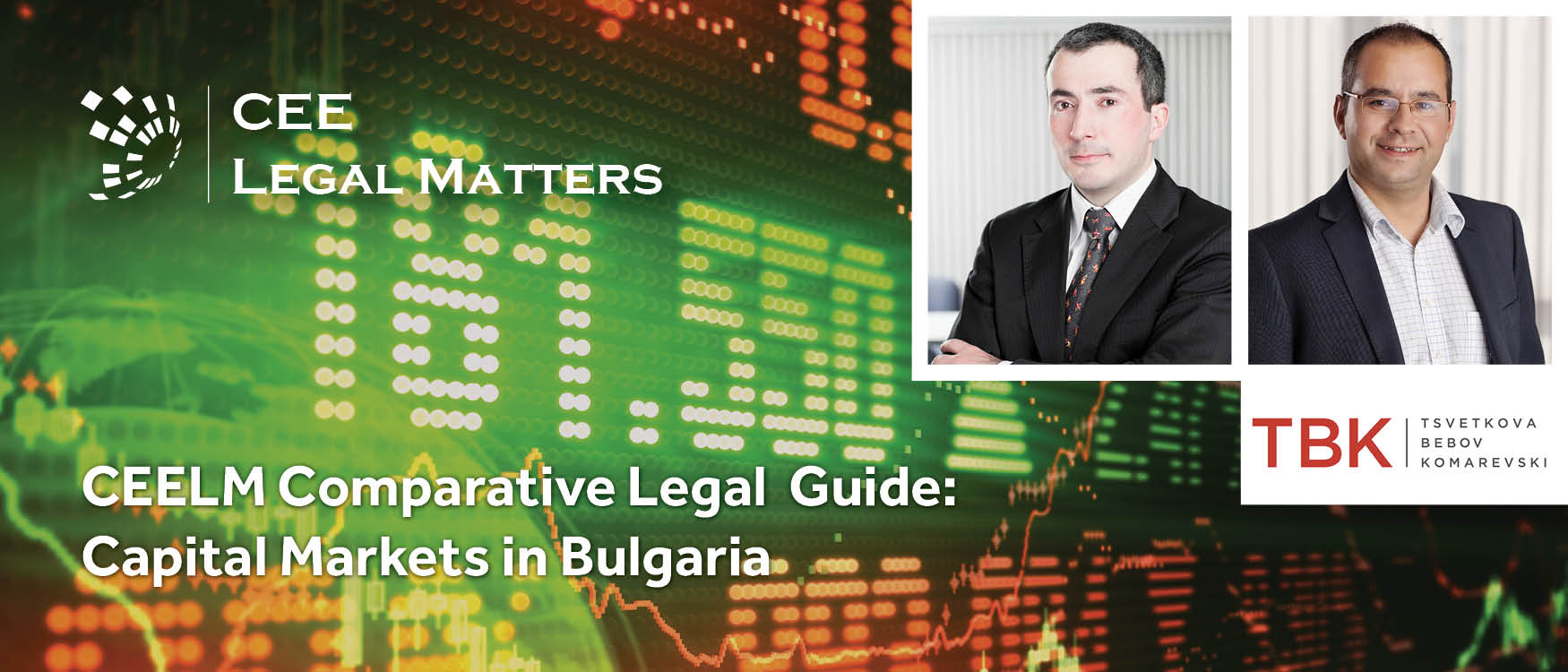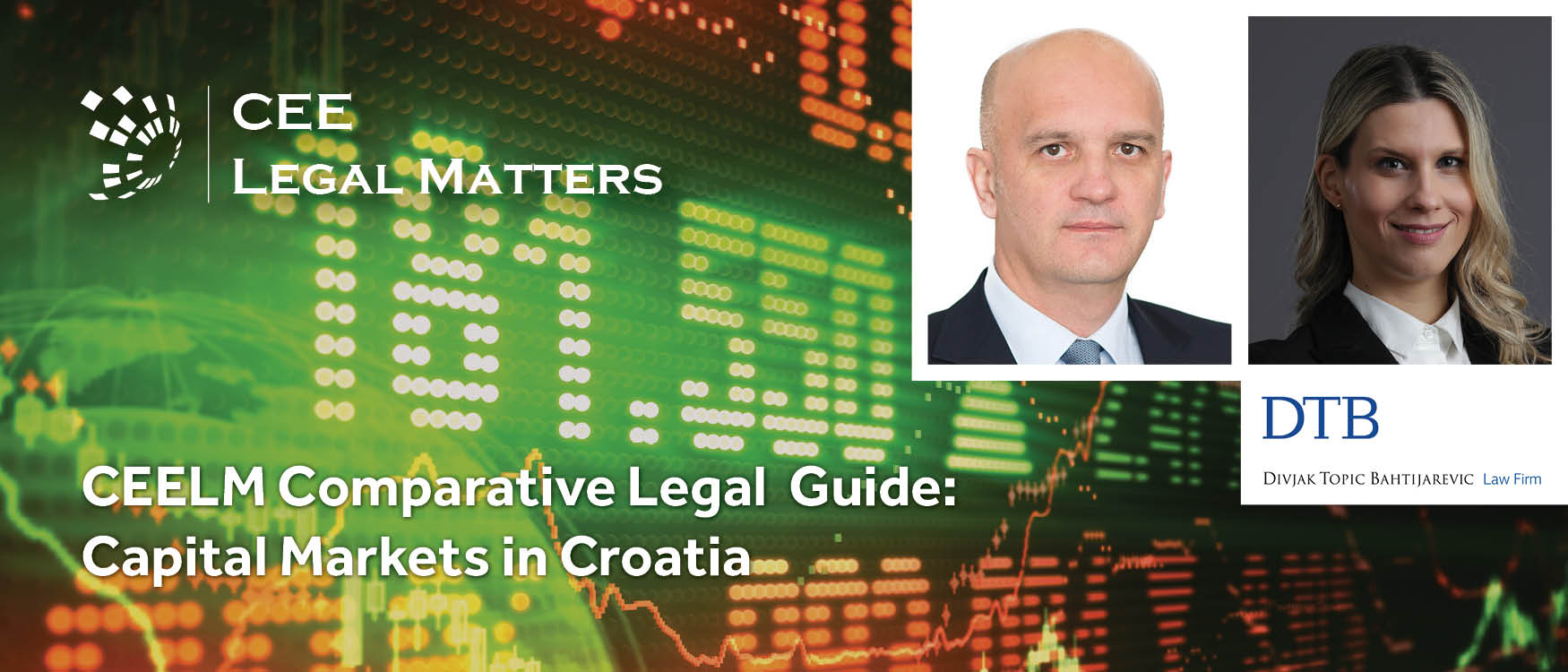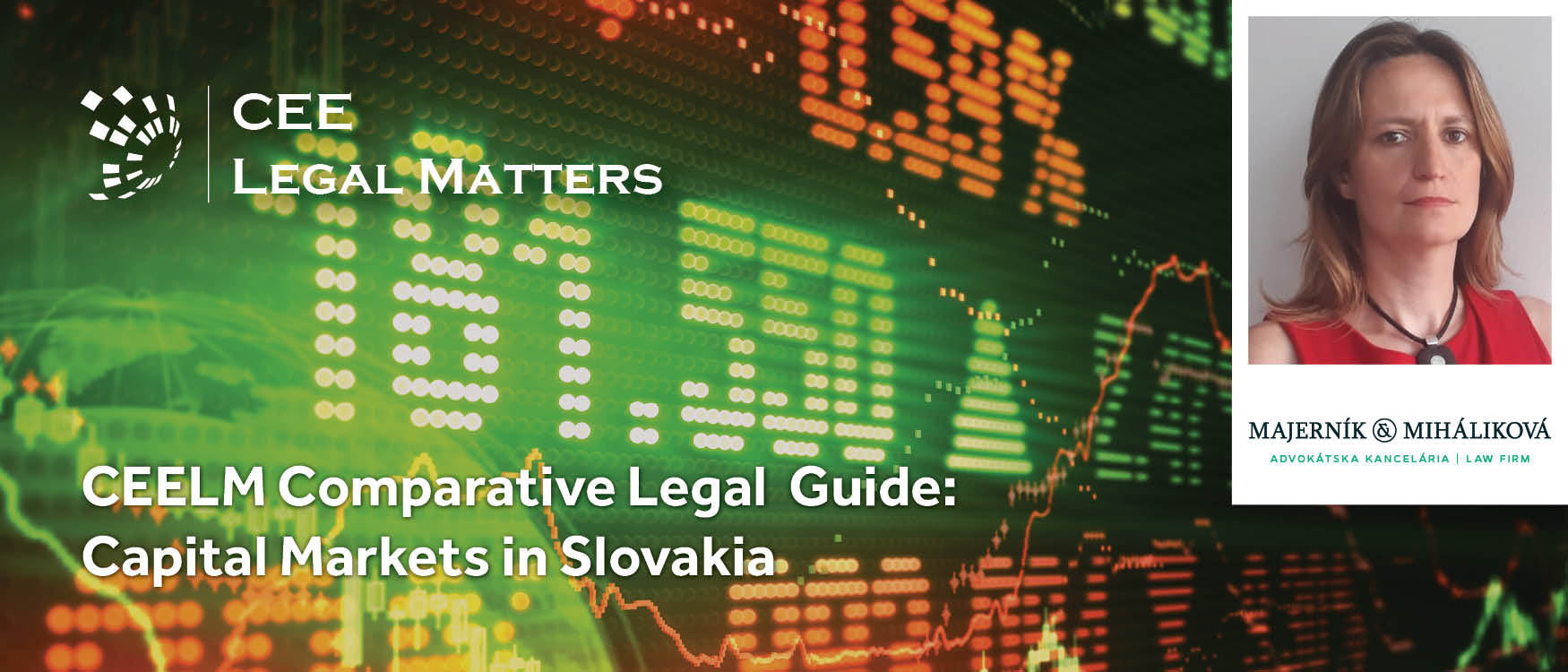Contributed by Avellum.
1. Market Overview
1.1. Biggest ECM and DCM transactions over the past 2-3 years
Historically, the Ukrainian market was not as famous for its national equity capital and debt market as opposed to other financial centres. The situation has not changed much during the last decade and there are still very few national capital markets transactions.
This situation is expected to change once the current securities law reform is enacted (it is expected to happen later in 2020).
1.1.1. Equity Capital Markets Transactions
During the last two years, as the result of the major reform of the banking sector aimed to make the financial system crisis-resistant, there was a large number of private offerings by banks seeking additional capitalisation. During 2018-2019, the volume of issued shares amounted to approximately EUR 2.8 billion. Some large businesses in other sectors also opted for private placements instead of public offerings to improve its capital structure for example, by way of debt-to-equity conversions.
1.1.2. Debt Capital Markets Transactions
The major part of the transactions with debt securities in Ukraine includes transactions with (i) Ukrainian government bonds (in Ukrainian: obligatsii vnutrishnih derzhavnyh pozyk Ukrainy) (ii) municipal bonds (in Ukrainian: obligatsii mistsevyh pozyk), and (iii) corporate bonds.
The most popular debt securities traded in Ukraine are Ukrainian governmental bonds. In 2019, the Ministry of Finance of Ukraine issued Ukrainian government bonds for a total amount of approximately UAH 334 billion (approximately EUR 11.2 billion). To facilitate the purchase of the Ukrainian governmental bonds by foreign investors, Clearstream linked Ukraine to its network in May 2019.
Municipal bonds are also relatively popular instruments. A recent municipal bonds issue was the UAH 300 million (approximately EUR 10 million) 3-year 9.79% municipal bond issued by the Lviv City Council in 2019.
Examples of recent corporate bonds issues include: (i) the UAH 250 million (approximately EUR 8.5 million) 5-year 19% corporate bonds issue by Stock Company “Ukrposhta” (Ukrainian national postal operator) in 2018, and (ii) the UAH 200 million (approximately EUR 6.7 million) issue by Joint Stock Company “TASCOMBANK” (one of the largest Ukrainian banks) in 2019.
Notably, the Tascombank issue was first-ever corporate bonds issue in Ukraine complying with EU standards. The issue provided for two series of bonds equal to UAH 100 million (approximately EUR 3.4 million) each, one to be redeemed in 5 years, and another in 10 years. Each series provides for the annually resettable coupon. This transaction was truly innovative for the Ukrainian market.
Despite there is some movement on the Ukrainian capital market, the Ukrainian blue-chip companies and quasi-sovereigns prefer to raise funds on the international capital markets due to, among others, absence of the sufficient demand for debt securities in Ukraine.
2. Overview of the local stock exchange and listing segments (markets)
The Ukrainian laws provide a number of the requirements applicable to the Ukrainian stock exchanges and other professional participants of the capital market. Trading on the stock exchanges has to comply with the rules of the respective stock exchange that has to be registered with the National Securities and Stock Market Commission of Ukraine (the NSSMC). The NSSMC supervises the Ukrainian stock exchanges and regulates their activities.
As of today, there are only six stock exchanges in Ukraine. Based on the volume of the exchange contracts, the biggest stock exchanges are the Perspectiva Stock Exchange and the PFTS Stock Exchange.
In terms of trading on the stock market, the Ukrainian government bonds accounted for 94.6% of the total volume of the exchange contracts concluded within the Ukrainian stock exchanges in 2019. The volume of traded shares in 2019 was equal to 0.11%. Corporate bonds accounted for 2.9% of the total volume of the exchange contracts on the stock exchanges in 2019.
The total volume of the securities’ exchange contracts made with the securities exchanges amounted to UAH 305 billion (approximately EUR 10 billion) in 2019. Notably, the exchange contracts on the secondary market amounted to 98.9% of the total volume of the exchange contracts in 2019.
There is no concept of regulated and non-regulated markets in Ukraine. Ukrainian stock exchanges divide the securities into two groups: (i) listed securities and (ii) non-listed securities. Both listed and non-listed securities have to be included in the stock list to be traded on the stock exchange. The listed securities should be also included in the stock register of the stock exchange.
Listed securities are considered a more attractive instrument than non-listed securities. At the same time, Ukrainian law establishes strict requirements for the listed securities and their issuers, therefore as of today the biggest part of the listed securities constitute the Ukrainian government bonds.
The non-listed securities can be also freely traded on the stock exchange, however, the requirements to such securities and their issuers are less strict than to the listed securities.
2.1. Admission of the foreign issuers’ securities
Foreign issuers’ securities can be admitted to trading in Ukraine only after obtaining the NSSMC’s decision on admission of such securities to trade in Ukraine.
For the foreign securities to be admitted to trading in Ukraine, the following requirements have to be satisfied:
(i) the issuer has to be registered outside of Ukraine under laws and regulations of the state of registration;
(ii) the securities issue and/or the prospectus has to be registered in the state of registration of the issuer or with the stock exchange of the state, where such securities are traded;
(iii) the securities should be assigned with the ISIN and the CFI codes;
(iv) the securities have to be accepted to trade on at least one stock exchange approved by the NSSMC (which are Nasdaq, Inc, NYSE, the EU stock exchanges, Hong Kong Exchanges, and Clearing);
(v) there should be submitted a written confirmation from the Central Securities Depositary on the possibility to account for the foreign securities on the correspondent account of the Central Securities Depositary opened with the foreign central securities depository or with the international depositary clearing company.
The NSSMC decides on the admission of the foreign securities to trade in Ukraine within 30 calendar days from the day of submission of all required documents.
Once the securities are admitted to trading in Ukraine, the stock exchanges admit them to trading on the stock exchange as the non-listed securities.
3. Key Listing Requirements
Ukrainian law provides that the listed securities are the securities that are listed on the stock exchange and were included in the stock register as corresponding to the listing requirements.
3.1. ECM
The shares may be listed on the stock exchange provided that the issuer complies with, at least, the following requirements:
(i) it has existed for at least three years;
(ii) its minimum equity capital amounts to UAH 300 million (approximately EUR 10 million);
(iii) its minimum annual net income from the sale of goods, works and services for the last fiscal year amounts to UAH 300 million (approximately EUR 10 million) (excluding banks);
(iv) its minimum market capitalisation amounts to UAH 100 million (approximately EUR 3 million);
(v) the portion of its free float shares constitutes 10% of the share capital or valued at UAH 75 million (approximately EUR 2.5 million);
(vi) the number of its shareholders amounts to 150;
(vii) it has an officer who holds the position of a corporate secretary; and
(viii) it conducts an annual audit under international auditing standards involving an independent external auditor for at least two years.
The stock exchange also may establish a separate segment for non-listing shares for new companies, which may be interesting for the investors aiming to develop medium-sized businesses in Ukraine. Admission to such segment is subject to the compliance by the issuer with the following requirements:
(i) the issuer has existed for at least one year (or at least six months provided that all other requirements during such period have been met);
(ii) minimum market capitalization is UAH 20 million (EUR 670 thousand);
(iii) minimum of 50 shareholders compose the issuer;
(iv) the issuer conducts an annual audit under the international auditing standards;
(v) the issuer is encouraged to follow corporate governance principles and international financial reporting standards.
3.2. DCM
For the debt securities to be included in the stock register, the following conditions have to be satisfied:
(i) the issuer should exist for at least two years (subject to certain exceptions);
(ii) the net assets value of the issuer and/or the security provider should be at least UAH 300 million (approximately EUR 10 million);
(iii) the net profit from the sale of goods, works or services of the issuer and/or the security provider should be not less than UAH 300 million for the last year (except for the banks);
(iv) the issuer and/or the security provider should not have losses for the previous financial year;
(v) no default has occurred;
(vi) the nominal value of the securities issue should be equal to at least UAH 100 million (approximately EUR 3.4 million).
The above requirements do not apply to the issue of (i) Ukrainian government bonds, (ii) municipal bonds, or (iii) bonds of international financial organisations.
Municipal bonds can be included in the stock register if the nominal value of the issue exceeds UAH 50 million (EUR 1.7 million).
Ukrainian government bonds and bonds of international financial organisations are included in the stock register without completion of the listing procedures.
The stock exchange can establish additional requirements for the inclusion of the securities in the stock register (such as compliance with the corporate governance principles, additional requirements to the financial statement of the issuer etc.). The stock exchange further monitors compliance with the listing requirements and in case of violations can decide on the delisting of the securities.
4. Prospectus Disclosure
4.1. Regulatory regimes (Prospectus Regulation or similar)
A public offering of the securities requires the preparation and submission of the prospectus. The Ukrainian prospectus regulations were drafted based on EU Regulation 2017/1129 of the European Parliament and of the Council of 14 June 2017.
The prospectus should provide the investors with all the necessary information to allow an investor to make an investment decision on the purchase of the respective securities.
Ukrainian laws provide that prospectus should contain three parts: (i) a summary, (ii) a registration document, and (iii) a document on the securities. The prospectus may consist of one or more separate documents.
The information that has to be disclosed in the prospectus depends on the type of the offered securities.
For example, the prospectus for the corporate bonds issue should contain information about:
(i) Any risks associated with the public offering, the issuer’s business, and its securities;
(ii) the financial statements of the issuer for the last two years and the last interim financial statements that precede the date of submission of the prospectus to the NSSMC.
(iii) planned or forecasted profit of the issuer;
(iv) officials of the issuer and the persons performing managing functions;
(v) majority shareholders of the issuer;
(vi) any court proceedings involving the issuer that have or may have a significant adverse effect on the issuer and its financial performance;
(vii) any significant changes in the financial position of the issuer and position in the market in which the issuer operates;
(viii) any material transactions of the issuer conducted outside of its ordinary course of business.
In case of any significant changes related to the information contained in the prospectus (for example, (i) change of the issuer’s officials, or (ii) bankruptcy of the issuer), the prospectus should be amended accordingly.
Substantial changes to the prospectus have to be made in the form of an annex to the prospectus and submitted to the NSSMC for approval.
4.2. Local market practice
In the case of a public offering of securities, the information contained in the prospectus and subsequent changes to the prospectus have to be disclosed. Such disclosure has to be made by way of:
(i) publication of the prospectus and changes to the prospectus in the official printed edition of the NSSMC;
(ii) inclusion of the prospectus and changes to the prospectus in the public information database of the NSSMC;
(iii) publication of the prospectus and changes to the prospectus on the webpage of the issuer; and
(iv) publication of the prospectus and changes to the prospectus webpage of the relevant stock exchange.
The issuer should disclose the information contained in the prospectus and changes to the prospectus at least 10 days before entering into the agreements with the first owners of the securities.
4.3. Language of the prospectus for local and international offerings
The prospectus has to be prepared in Ukrainian. If the prospectus contains references to other documents, they should be also prepared in Ukrainian.
The prospectus of the foreign issuers should be prepared in Ukrainian and, upon the discretion of the issuer, can be also prepared in English or in other languages of the European Union state, where the securities are offered for sale or a public offering or admitted to trading on the stock exchange.
5. Prospectus Approval Process
5.1. Competent Regulator
The prospectus has to be submitted to the NSSMC for approval.
5.2. Timeline, number of draft submissions, review and approval process
Once the prospectus is complete, it has to be submitted for approval of the NSSMC in paper form and electronic form together with the supporting documents. The supporting documents include, among others, the issuer’s approval for entering into the transaction, constituent documents of the issuer, the financial statements, and contact details of the people responsible for preparation of the prospectus.
The NSSMC reviews and approves the prospectus or refuses to approve it within 20 business days from the day of the submission of all necessary documents. In certain cases, such terms can be shortened to 10 business days (for example, if the issuer’s securities have been admitted to trading on the stock exchange).
If amendments are made to the prospectus, the NSSMC reviews and approves them within seven business days from the receipt of all necessary documents.
The NSSMC may refuse to approve the prospectus if:
(i) the submitted documents do not comply with requirements of the Ukrainian law;
(ii) there are inconsistencies between the provisions of the submitted documents;
(iii) there is false or incomplete information in the submitted documents;
(iv) the issue of the securities is conducted in bad faith.
The prospectus, which consists of a single document, is valid for the public offering within 12 months from the date of its approval by the NSSMC. If the prospectus consists of a few documents, the period of 12 months must be calculated from the date of the approval of the last document by the NSSMC.
6. Listing Process
The primary placement of the securities can be made either by way of (i) a public offering, or (ii) a private offering.
6.1. Public offering
Ukrainian laws provide that a public offering of securities is an offer addressed to an indefinite number of persons on the purchase of securities at the price and conditions determined by such offer. To make a public offering, it is necessary to apply for the admission of securities to trade on the stock exchange and inclusion of the securities in the stock register administered by the stock exchange.
The public offering of the debt securities can take from three to six months. The stages of the public offering are described below.
6.1.1. Preparatory steps
The process of the issue of the securities starts from the adoption of a resolution of the issuer’s competent body approving the contemplated issue of the securities (the “Approval”). Once the Approval is available, the issuer should proceed with the engagement of the underwriter (if it plans to engage one). The issuer should be mindful that the audited financial statements for the last two financial years would be necessary for the issue.
6.1.2. Preparation of the prospectus and other documents for the approval by the NSSMC
A separate work-stream required for the public offering is a preparation of the prospectus. The final version of the prospectus has to be signed by the issuer, the auditor, the stock exchange and the underwriter (if engaged for the transaction). Despite this step is not expressly required by the Ukrainian law, it is usually done so.
The issuer has to submit the prospectus and other documents to the NSSMC within 60 days from the adoption of the Approval. The NSSMC has 20 business days (10 business days in certain cases) for review of the submitted documents. If the prospectus and other submitted documents are in good order, the NSSMC issues a temporary certificate on registration of the issue and approves the prospectus.
After the prospectus is approved, the issuer has to publish the prospectus and the notification on the publication of the prospectus for the review of the potential investors.
6.1.3. Further steps
Upon publication of the prospectus, the issuer has to agree on the servicing of the securities’ issue with the Central Securities Depositary. Furthermore, the ISIN code has to be assigned to the notes.
After completion of the above steps, it is necessary to prepare and depose the temporary global notes certificated with the Central Securities Depositary.
Afterward, the issuer has to submit the documents on the public offering to the NSSMC and to make a publication on a public offering. Upon completion of these formalities, the issuer places the securities by way of the public offering.
6.1.4. Closing formalities
The issuer has to approve the results of the issue within 60 days from the date of termination of the term for the placement of securities. Within 15 days from the approval of the results of the issue, the issuer has to submit to the NSSMC the report on the results of the securities’ issue. The NSSMC has 25 business days to (i) register the submitted report and (ii) issue the certificate on registration of the securities.
The issuer has to publish the report on the results of the securities’ issue within three business days from the registration of the respective report by the NSSMC. The global notes certificate has to be obtained and deposited with the Central Securities Depositary within seven business days from the day of the receiving of the certificate on registration of the corporate bonds.
6.2. Private offering
A private offering is placement of securities that is carried out among a predetermined circle of persons, the number of non-qualified investors among which may not exceed 150 persons. Preparation of the prospectus is not required for private placement.
The private offering of the debt securities can take from two to five months. The term for the placement of bonds by way of private offering is shorter than in the case of the public offering due to the absence of the requirement to prepare a prospectus. The stages of the private placement of securities are similar to the stages of the public placement (except for the requirement of the preparation and approval of the prospectus).
6.3. Ukrainian government bonds
The Ministry of Finance of Ukraine acts as the issuer and conducts the placement of the Ukrainian government bonds. The National Bank of Ukraine acts as the agent for servicing of the issue and redemption of the Ukrainian government bonds. The Ministry of Finance of Ukraine determines the amount and conditions for each issue of Ukrainian government bonds per the framework terms of issue and the procedure for placement approved by the Cabinet of Ministers of Ukraine.
Ukrainian government bonds are placed at auctions conducted by the National Bank of Ukraine at the initiative of the Ministry of Finance of Ukraine. Only primary dealers (Ukrainian banks approved by the Ministry of Finance of Ukraine) can participate in the auction and purchase Ukrainian government bonds on the primary market.
Primary dealers can participate in the placement of Ukrainian government bonds on their own and at their own expense or to act as brokers for their clients. The placement of Ukrainian government bonds is carried out by electronic trading systems and takes the form of (i) auction and (ii) the fixed-income sales.
7. Corporate Governance
Listed companies are subject to a more prudent corporate governance requirements. In particular, such companies must establish a supervisory board, consisting of at least 1/3 of the independent directors. Moreover, certain mandatory committees (audit committee, remuneration committee etc.) must be established. While the supervisory board itself is subject to a number of regular reporting requirements, including for the purpose of evaluation of the supervisory board’s performance.
Additionally, earlier this year the NSSMC adopted the Corporate Governance Code of Ukraine (the “Code”), which reflects the latest developments in the field of environmental, social and corporate governance by securities issuers.
This Code was developed under the G20/OECD Principles of Corporate Governance, which are the international benchmark for good corporate governance. Besides, the Code reflects the recommendations of the Growth and Emerging Markets Committee IOSCO Final Report on Corporate Governance. The disclosure recommendations are consistent with those set out in the United Nations Conference on Trade and Development (UNCTAD) Guidance on Good Practices in Corporate Governance Disclosure. The provisions of the IFC’s corporate governance standards and various national codes have also been taken into account and inspired the drafters of this Code.
The provisions of the Code are not mandatory. Thus, the issuers are not obligated to comply with it. As in many other countries, in Ukraine, it is an instrument of soft law. However, compliance with the Code is highly recommended to companies entering capital markets.
In addition to the requirements established by law, the Code provides best practices aimed to provide potential investors with the necessary comfort. The document clearly defines the role of the shareholders, the supervisory board and the executive body in managing the company. Finally, it highlights the role of the company’s other stakeholders and its commitment to achieving sustainable development.
8. Documentation and Other Process Matters
N/A
9. Ongoing Reporting Obligations (Life as a Public Company)
Listed companies should comply with various ongoing reporting obligations established by applicable regulations, in particular, disclose regular and special information about the issuer, insider information, information about the owners of voting shares above, whose shareholding exceeds respective thresholds. The scope of disclosure requirements is extensive and includes most areas of company’s activities (among others, information on granting consent to significant transactions; changes in the composition of the issuer’s officers; the decision of the issuer on reduction of the share capital; initiation of bankruptcy proceedings against the issuer; changes in the rights of issuer’s shareholders etc.)
From a technical standpoint, such disclosure is made either by placing such information in the publicly accessible information database of the NSSMC (http://stockmarket.gov.ua) or through a person dealing with the disclosure if regulated information on behalf of stock market participants.
9.1. Annual and interim financials
The regular information includes annual and interim one.
Annual financials include, in particular, the annual financial statements certified by the auditor supplemented with the auditor’s report made by an independent auditor.
The reporting period for preparing annual information is a calendar year. Disclosure of annual information must be made not later than 30 April of the year following the reporting one.
Interim financials include interim financial statements (either audited or not).
The obligation to disclose interim information applies to joint stock companies whose shares have been publicly offered and/or admitted to trading on a stock exchange by inclusion in the exchange register, banks and issuers, whose securities other than shares have been publicly offered and/or admitted to trading on a stock exchange by inclusion in the exchange register.
Interim information is to be prepared at the end of each quarter and disclosed no later than the 30th of the month following the reporting quarter.
9.2. Ad hoc disclosures
Ad hoc disclosures concern the special information, i.e., information that has changed in comparison to the one disclosed within the regular disclosure.
It includes, among others, information on granting consent to significant transactions; changes in the composition of the issuer’s officers; the decision of the issuer on reduction of the share capital; initiation of bankruptcy proceedings against the issuer; changes in the rights of issuer’s shareholders, etc.
Such information should be disclosed in the form of notification either (i) on the website of the issuer whose securities are admitted to trading on the stock exchange, (ii) in the publicly accessible information database of the NSSMC (http://stockmarket.gov.ua) or (iii) through a person dealing with the disclosure if regulated information on behalf of stock market participants.



























